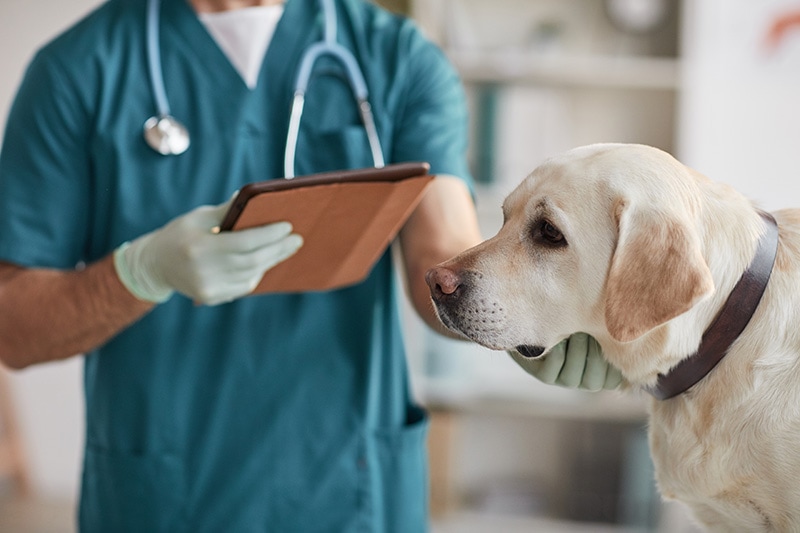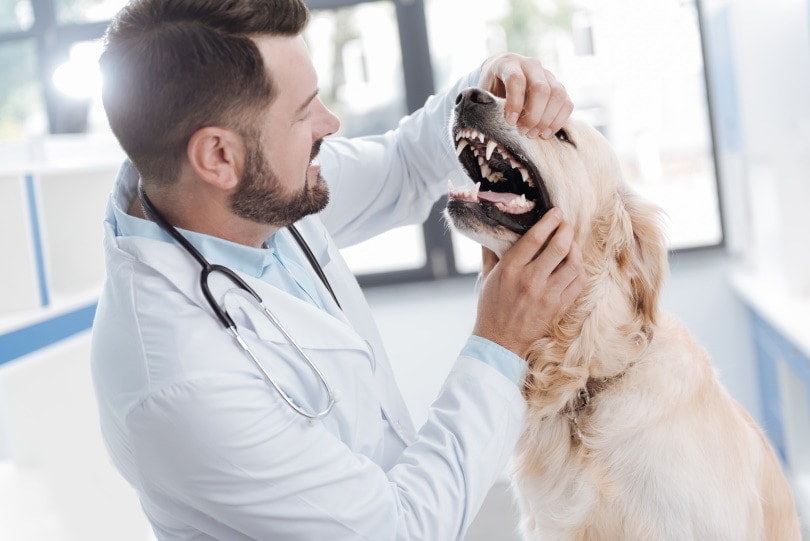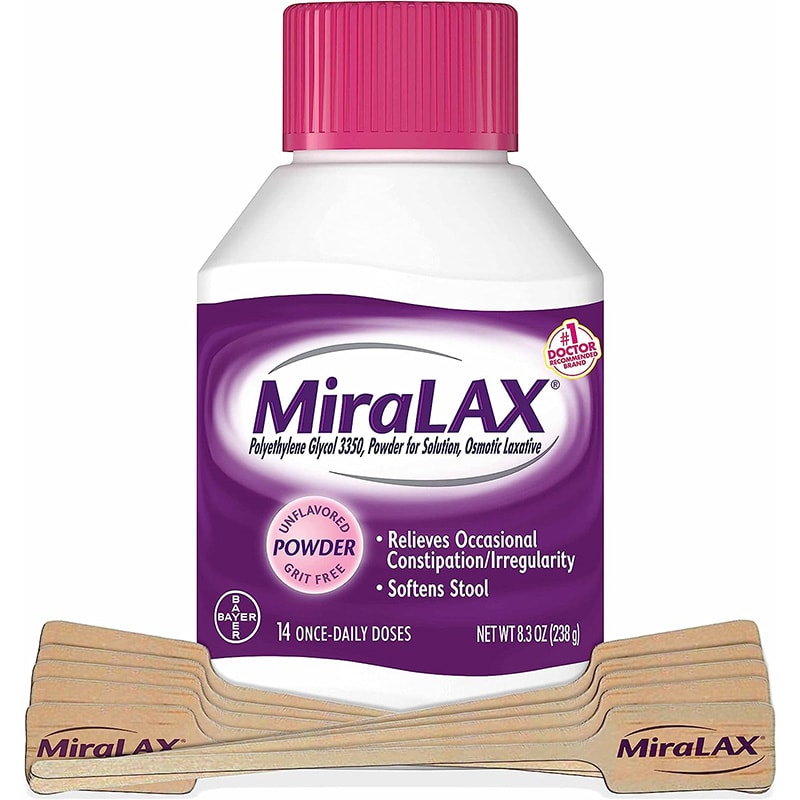My Dog Ate Moldy Food: Our Vet Explains What to Do

Updated on

Click to Skip Ahead
We all know our dogs are fast at finding things they shouldn’t eat, and it’s especially worrisome if they get into the trash where you threw out some moldy food. Do you need to worry if your dog might have eaten something moldy? What should you do? This could be an emergency, and you may need to contact your vet quickly. Read on to learn more.
Your Dog Ate Moldy Food! What Do You Do?
If you’re unsure if your dog has eaten moldy food, take a quick stock of everything. Do your best to get your dog away from the possible moldy foodstuffs safely.
If it looks like they’ve gotten into something, you need to have them examined by a veterinarian as soon as possible. You can also contact one of the pet poison lines for further advice:
- ASPCA Animal Poison Control (Phone: 888-426-4435)
- Pet Poison Helpline (Phone: 855-764-7661)
Contact your veterinarian to see if they have any immediate recommendations for you. In some cases, they may have you induce vomiting. Do not try to make your dog vomit unless your veterinarian specifically tells you to.
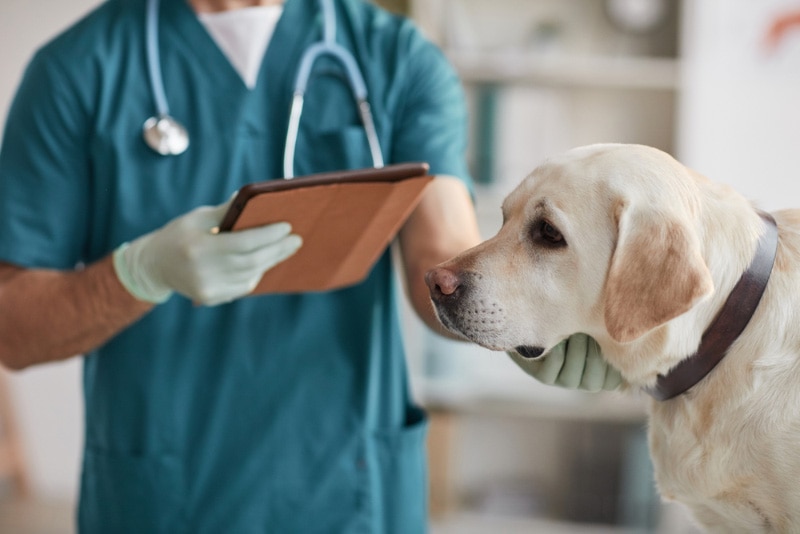
The Dangers of Moldy Food
Some molds produce harmful mycotoxins or fungal toxins. These toxins can occur in dog food, on people food, or even on moldy vegetation found in and around your garden.
Some of these mycotoxins can be tremorgenic or cause tremors to develop in your dog. Penicillium species of mold often produce these mycotoxins. They can be found in your fridge, trash, or compost pile, among other places.
Signs of Moldy Food Ingestion
You may see a variety of signs of moldy food ingestion. These signs will typically occur within a couple of hours after your dog eats the moldy material and can include the following:
- Vomiting
- Diarrhea
- Lethargy
- Tachycardia (elevated heart rate)
- Panting
- Muscle tremors
- Seizures
- Disorientation
- Vocalizing
Even if your dog is not showing any of these signs, your veterinarian should examine your dog if your furry friend might have gotten into something moldy. Your vet may suggest monitoring your pet in the hospital for several hours if any of these problems develop.
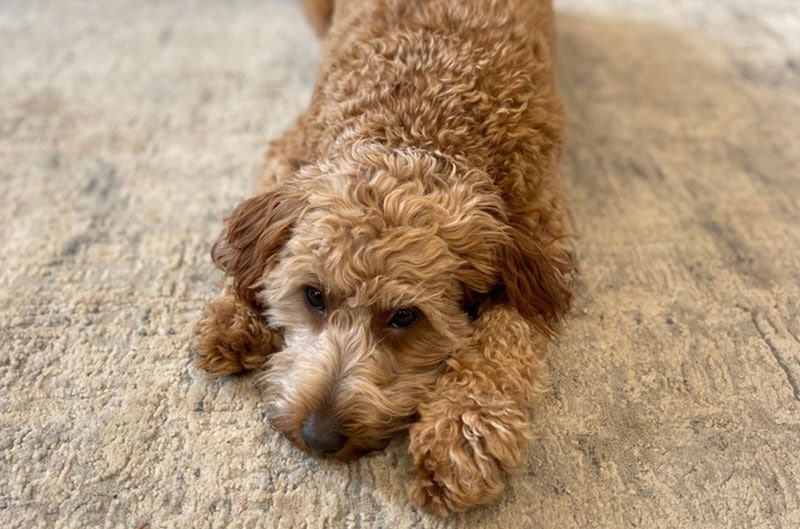
Treatment for Moldy Food Ingestion
Your veterinarian will put together a treatment plan based on when your dog ate the food and what signs they’re showing.
If your dog ate moldy food and isn’t showing any signs of toxicity, your veterinarian may consider trying to induce vomiting. They may use hydrogen peroxide, apomorphine, or a newer medication, Clevor (ropinirole). If your dog is already symptomatic, they won’t try to make your dog vomit because your dog could aspirate if they vomit while seizing. They may also give activated charcoal, but that may be less effective.
If your dog is actively showing signs of toxicity, your veterinarian will work to treat those signs. Your dog could receive anti-nausea medications like Cerenia (maropitant) or Zofran (ondansetron). Your veterinarian may prescribe fluid therapy to keep your dog hydrated and help maintain their blood pressure.
If your dog is seizing, the vet will likely prescribe a muscle relaxer like methocarbamol. If your dog is severely affected, they may have to treat seizures with anticonvulsant medication or even anesthesia.
The veterinary team will monitor your dog closely. They will monitor your dog’s temperature for changes, as your pup could run a fever, especially if they are having tremors or seizures.
According to recommendations from the ASPCA, your dog will likely need to be hospitalized for 24 to 72 hours if they are symptomatic.
Preventing Your Dog From Getting Into Moldy Food
Our dogs don’t always make it easy to keep them safe from dangers. While it isn’t foolproof, you can try getting a trash can with a secure lid to minimize the possibility of your dog getting into the garbage. Removing trash from the kitchen and securing it in your outdoor garbage bin can also help, especially if you have some food that was particularly pungent.
If you have a compost heap or bin, ensure it is secured and that your dog can’t get into it. Consider a fence around it or locking mechanisms if you use a tumbler-type compost container.
If you have a garden or fruit trees in your yard, harvest them regularly to minimize the possibility of food moldering on the plant and dropping into your yard.
Frequently Asked Questions (FAQ)
How much mold can harm a dog?
It only takes a small amount of mold to cause signs of toxicity from mycotoxins. If your dog only ingests a small amount of mold, their clinical signs may be mild, such as gastrointestinal signs such as vomiting. If your dog ingests a lot of moldy food, they are more likely to have more severe signs, from seizures to hyperthermia–even death.
Can moldy dog food cause diarrhea?
Yes, moldy food can cause diarrhea in dogs. At the same time, the biggest worry about moldy food is the consequences like muscle tremors. Many things, moldy food included, can lead to diarrhea and vomiting in your dog. For all that popular culture suggests dogs are garbage disposals on four legs, anything that alters their normal gut microflora can have disastrous consequences.
Can my dog’s food become moldy?
Your dog’s canned food and kibble can become moldy or rancid. If the canned food is unopened, it is much less likely to become moldy than an open can of food.
Dry food can also become moldy, especially if it is kept in a humid or moist area. Make sure to keep your dog’s dry food sealed to minimize the chance of it becoming moldy. Many dog food bags are self-sealing with a Ziploc-type mechanism, but you should also consider storing it in a plastic bin. That has the added advantage of keeping your dog from being able to easily get into the food when you’re not around.
If you find mold on the food, throw it all away because you might not be able to see all the mold with your naked eye.

Conclusion
If your dog might have eaten moldy food, contact your veterinarian immediately. Your dog may need medical treatment or, at the very least, observation to make sure nothing happens to your pup. But prevention is worth more than the cure, so ensure that any spoiled or moldy food is out of reach from your dog’s curious mouth.
Featured Image Credit: Wella Eriska, Shutterstock



